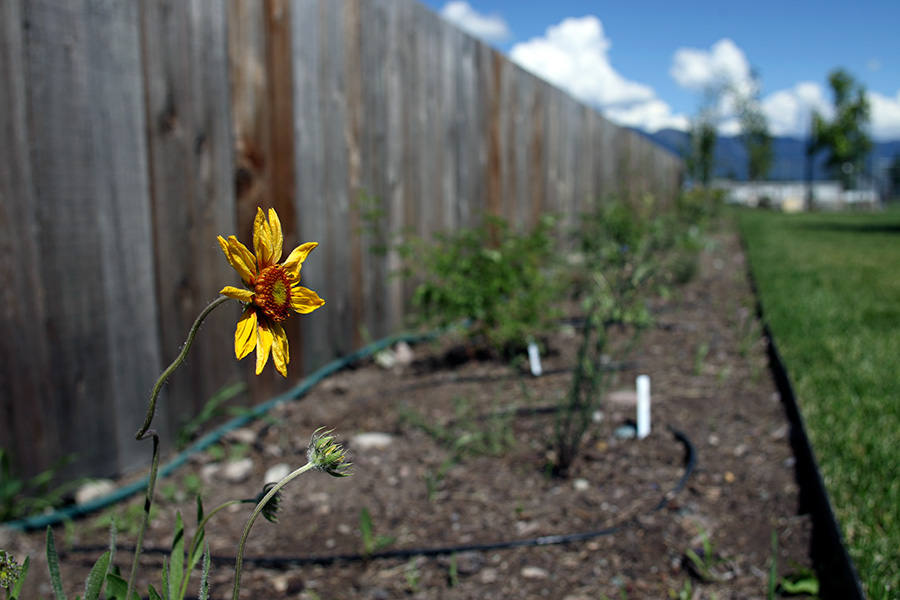On the north side of Helena Flats School’s parking lot stretches a garden filled with blooming yellow columbine, Indian paintbrush, and fledgling aspen trees. Unlike other areas of the school’s carefully manicured land, this plot only contains plants that are native to the state.
In late May, Lia Payne brought her initial dream of transporting “a tiny, little bit of Montana to our school yard” to fruition with the installation of the Helena Flats Montana Native Study Area.
Payne, a teacher who received a master’s degree in environmental science from Montana State University, said she wanted to integrate an awareness of native ecosystems into school curricula.
“Understanding natural systems and appreciating our local ecosystem, that’s just always been something that is of high value for me,” she said.
Hoping to create a native plants garden for the children, she spoke with school officials and brought her budding idea to Forestoration Inc., a Whitefish-based company specializing in outdoor space management, last year.
She began working with Forestoration’s David Noftsinger, vice president and lead design, and Shiva Solaimanian, landscape designer, to develop a project proposal and budget.
Describing both as “super committed” to the project, Payne emphasized the value of Noftsinger’s background in education, noting that it allowed him to think beyond aesthetics to suitable “educational components” for the garden.
Excited to be involved with the project, Solaimanian described Payne’s evident passion for the children to acquire a “sense of place” through the native area.
Armed with a design, Payne applied for funding from the Flathead Conservation District’s education grant program, which had provided money to another teacher, Claire Gutschenritter, to fund the installation of a vegetable garden on school grounds the prior year.
FCD Resource Conservationist Valerie Kurth said applicants must submit project details by mid-June for the annual grant process and present their proposals to the nonprofit’s board during the summer. She added that the program has been doling out funds to traditional and non-traditional educators for more than a decade.
The organization awarded Payne $4,899 for the garden’s creation.
“I think we’re all excited about being able to support projects like that because it’s really important for kids to learn about native plants,” Kurth said.
Payne petitioned the PTO board for funds to pay for some of Forestoration’s labor costs, receiving $1,300.
After about a year of work, Payne, Solaimanian and a volunteer group installed the native study area along the perimeter of the existing vegetable garden and small orchard over the course of two days on May 24-25.
Solaimanian was responsible for planting the aspen trees, and other landscape workers were tasked with completing much of the hardscaping, including the placement of sitting rocks for the outdoor classroom. Payne joined 17 student volunteers and six adult volunteers in planting the diverse native plants.
“I think it’s pretty amazing how such a small project can transform a space,” Solaimanian said of the finished project.
Hoping that exposure to the garden will “awaken an awareness in kids” about the natural ecosystems of Montana, Payne said she is planning outdoor lessons for the upcoming school year.
She added that she might even work to expand the garden in the future by planting shrubbery to create a wild play area for the children.
In the meantime, she expressed gratitude for the groups that helped her to accomplish her goal, especially for the FCD and Forestoration, which, she said, have made her “rock star list.”
